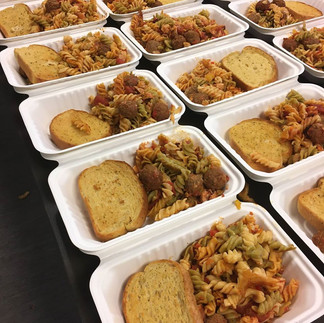Getting to the root of it - understanding the experience of food security for youth in NL
- Choices for Youth
- Jun 13, 2023
- 3 min read
Updated: Jun 14, 2023

PROOF, an interdisciplinary research program at the University of Toronto that studies effective policy approaches to reduce household food insecurity, defines food insecurity as “the inadequate or insecure access to food due to financial constraints.” Lower-income households are therefore more likely to experience food insecurity, making it a predictive marker of poverty (Household Food Insecurity Canada, 2021). Examples of food insecurity can range from not being able to afford a nutritious, balanced, and culturally appropriate diet; anxiety over not having enough food; and in severe cases, missing meals or going hungry due to lack of food (Household Food Insecurity Canada, 2021).
In Newfoundland and Labrador (NL), geographical challenges limit access to a stable food supply for many communities in the province. When this is compounded with rising food costs, those struggling to access food are disadvantaged even more. The 2020 Canadian Income survey found that 17.9% of households (approximately 90,000 individuals) in NL were experiencing some form of food insecurity, with 4.8% of households experiencing marginal food insecurity, 8.6% experiencing moderate food insecurity, and 4.5% of households experiencing severe food insecurity. At the time of the survey, 26.4% of children under 18 in NL lived in a food-insecure household (Food First NL, Blog Post, 2022).
The data shows that 68.8% of households in this province relying on social assistance as a primary source of income experience food insecurity (PROOF Report on Household Food Insecurity in Canada, 2021). Food bank use in NL has increased since the COVID-19 pandemic and has only continued to grow. In 2021, Food Banks Canada conducted a survey called HungerCount, which showed that 24.4% of all food bank users were youth aged 12-30 (Food Banks Canada HungerCount, 2021).
Food security is a key social determinant of health as poor food status is strongly linked to adverse outcomes in an individual’s physical and mental health, such as increased risks for chronic illnesses, non-communicable diseases, infections, and increased prevalence of mental health disorders. A key recommendation from the NL Health Accord includes better provincial programming that addresses food security.
At Choices for Youth (CFY), we know that young people face unique barriers when it comes to obtaining housing, mental health supports, employment, and food security. The youth demographic in our province is diverse and the barriers to food access they face are often not appropriately captured in standard assessments of food security.

In response, CFY’s Youth Leadership & Advisory Council (YLAC), a group of young people currently or previously involved in CFY programs, worked together to develop a survey that will allow us to get a point-in-time profile of food security for youth ages 12-29 across NL. The data collected will help CFY develop a better understanding of the barriers to food access and the potential solutions that would best support youth across the province. CFY’s YLAC agrees that having this data is an essential step toward enhancing food security for youth in NL.
“[The survey] gets the word out that, us youth, we’re struggling. If the cost of food went down, it would help us a lot more, and the stress would go away.” – YLAC member.
CFY’s NL Youth Food Security Survey is now available for youth ages 12-29. You can complete the survey online here: choicesforyouth.typeform.com/youthfoodsurvey
If you want additional information about the survey or would like to request a paper copy to complete, or if you are interested in learning more about YLAC, please contact Nivethine Mahendran at nmahendran@choicesforyouth.ca









Comments